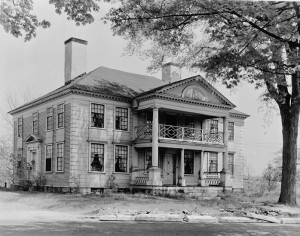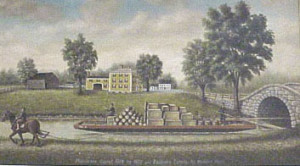by Martin Willis
A look at how antiques connect us to forgotten lives of the past

I was walking my dog this morning on the property of the 1790 House, which is a fine colonial structure in Woburn, Massachusetts that houses the auction company’s office. The property is right next to Rt. 128, which is always very noisy with a constant stream of traffic flowing north and south.
The historic house borders the Middlesex Canal, which was a concept that became a reality in the late 18th century. The canal connected Boston Harbor to the Merrimack River and had 20 locks with the average depth of 3 feet. Barges pulled by oxen transported many goods all the way to Concord, NH and back. The main function of the canal was to transport timber for shipbuilding from the virgin forest of New Hampshire to Medford, Mass. When the canal was built, it was a very substantial feat of engineering for that time.
 As my dog and I walked near the canal, we came to some brush that my dog decided to walk into. I forced my way through the thicket to find my dog, and came upon a magnificent chiseled granite post protruding out of the ground. It had a hand hammered and rusted iron eyelet near the top for rope lashing. I wondered when the last time was that someone saw this post lost in time. I realized that objects like these, along with antiques are connections to the forgotten lives of the past.
As my dog and I walked near the canal, we came to some brush that my dog decided to walk into. I forced my way through the thicket to find my dog, and came upon a magnificent chiseled granite post protruding out of the ground. It had a hand hammered and rusted iron eyelet near the top for rope lashing. I wondered when the last time was that someone saw this post lost in time. I realized that objects like these, along with antiques are connections to the forgotten lives of the past.